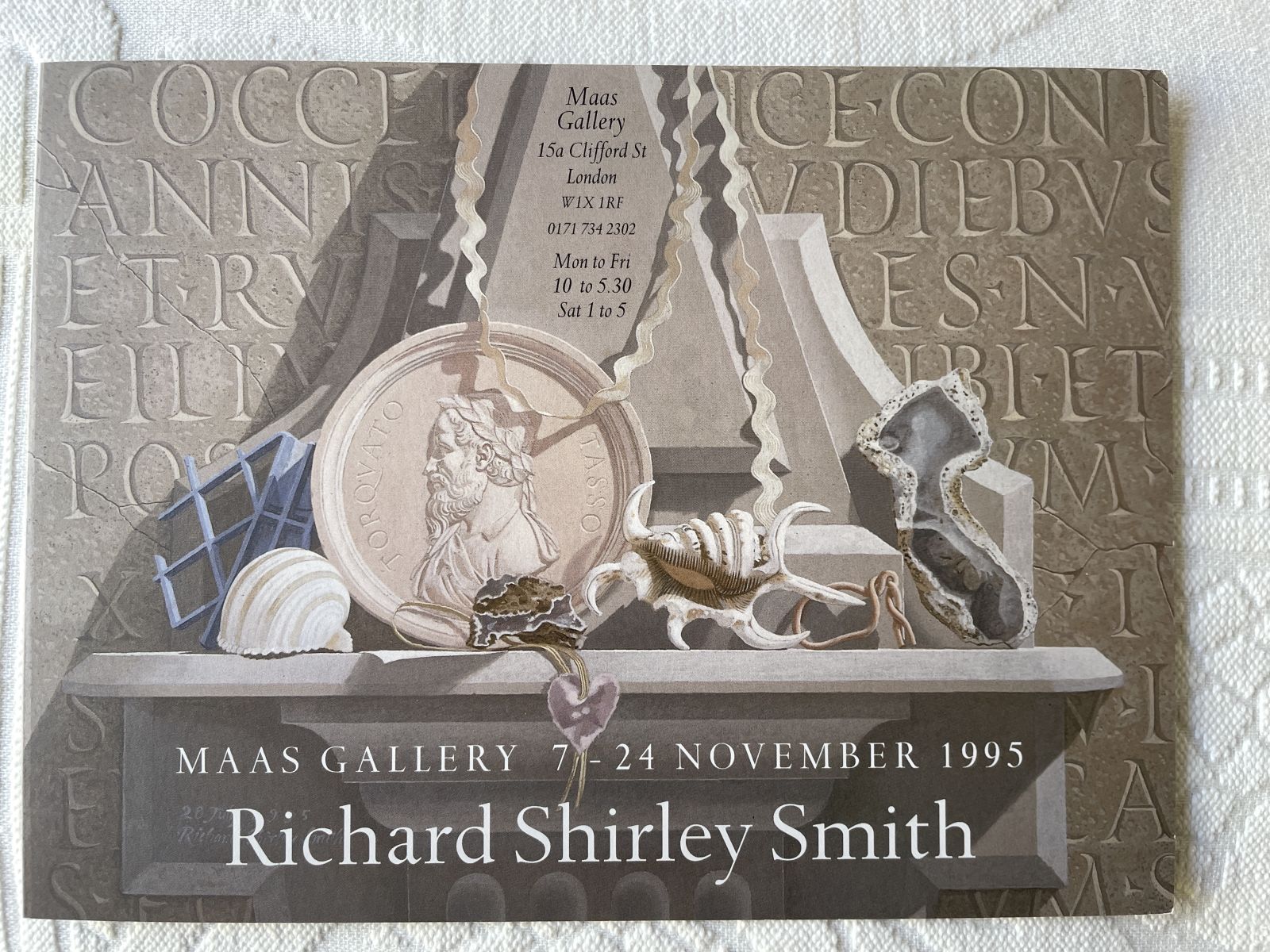Richard Shirley Smith

Ten years ago, Practitioners' Voices in Classical Reception Studies published an interview with artist Richard Shirley Smith, whose paintings, wood engravings and large-scale murals have frequently engaged with the imagery and ideas of classical antiquity. In May 2022, Jasmine Hunter Evans and Jessica Hughes returned to visit the artist at his home in Marlborough, to learn more about his techniques and creative processes. The photographs and audio tracks on this page can be enjoyed in conjunction with the transcript of our first interview, published in the 2012 issue.
A document containing transcripts of the audio files is available for download.

Making epigraphic 'squeezes'
After studying at the Slade School of Art in London, Richard Shirley Smith spent time in the early 1960s at the British School at Rome, exploring the city and its ancient remains, and developing his unique artistic style. Amongst the ancient artefacts that inspired him were the countless Roman inscriptions on display in the city's museums and at sites surrounding the city. In this short recording (below), Richard explains the process of making epigraphic 'squeezes' using thick Italian blotting paper, water, and a soft clothes brush. This process enabled him to make accurate copies of the inscriptions he encountered in Rome, which he could then incorporate into his own paintings and engravings. The example we see in the recording is an inscription from the reign of the Emperor Nerva (CIL VI 8546), which can be glimpsed in the background of the painting reproduced below, together with other classical motifs and artefacts that have recurred throughout Richard's work.
Wood engravings
This next recording explores a medium which has been a central feature of Richard Shirley Smith's artistic practice: the wood engraving. Over the course of his career, Richard has carved more than 300 engravings in wood, producing book illustrations for Faber & Faber, Oxford University Press, The Folio Society, The Libanus Press and The Limited Editions Club of New York. He has also made wood engravings for book plates - personal commissions which frequently draw on the imagery of classical antiquity. Here, Richard explains how he produces these prints, by progressively removing sections of the wood to enable the printing of a 'graded' black, white and grey image. The conversation focusses first on an early print inspired by a Roman sarcophagus; we then move on to examine a wood engraving depicting the arms of Pope Leo X, made for Hugh Shankland's 1985 edition of the letters between Lucrezia Borgia and Pietro Bembo (published by Libanus Press, Marlborough).
Painted interiors
In 1973 Richard published a set of four educational slide strips, The Story of the Venetian Villas, following three photographic expeditions to the Veneto. The Renaissance paintings from these villas were a constant source of inspiration while he worked on his own twenty mural decorations - as were the rediscovered murals from Pompeii and Rome that he had seen while a student at the Accademia Britannica. Richard created these murals for private houses, businesses and public buildings between 1975 and 2006 and found painting on such a large scale, and with the help of students or friends, a liberating experience. In this film, Richard introduces us to the example of the 'Doric Villa' that he decorated with his son Leo, drawing out some of its classical and neoclassical influences.
Book illustrations

This final recording delves into Richard Shirley Smith's book illustrations, which span the media of wood engraving, painting, line drawing and linocuts. We look together at the Folio Society's editions of Ovid's Metamorphoses (trans. Mary Innes) and Jérôme Carcopino's Everyday Life in Ancient Rome, the Heritage Press edition of The Poems of Percy Bysse Shelley, and the long poem Hero and Leander by David Burnett. Richard talks about finding inspiration for these illustrations in the artefacts of ancient Italy, including the famous Nilotic mosaic from Palestrina.
You can find many more examples of Richard Shirley Smith's work - and futher details about his career - on his website: https://www.richardshirleysmith.co.uk/
